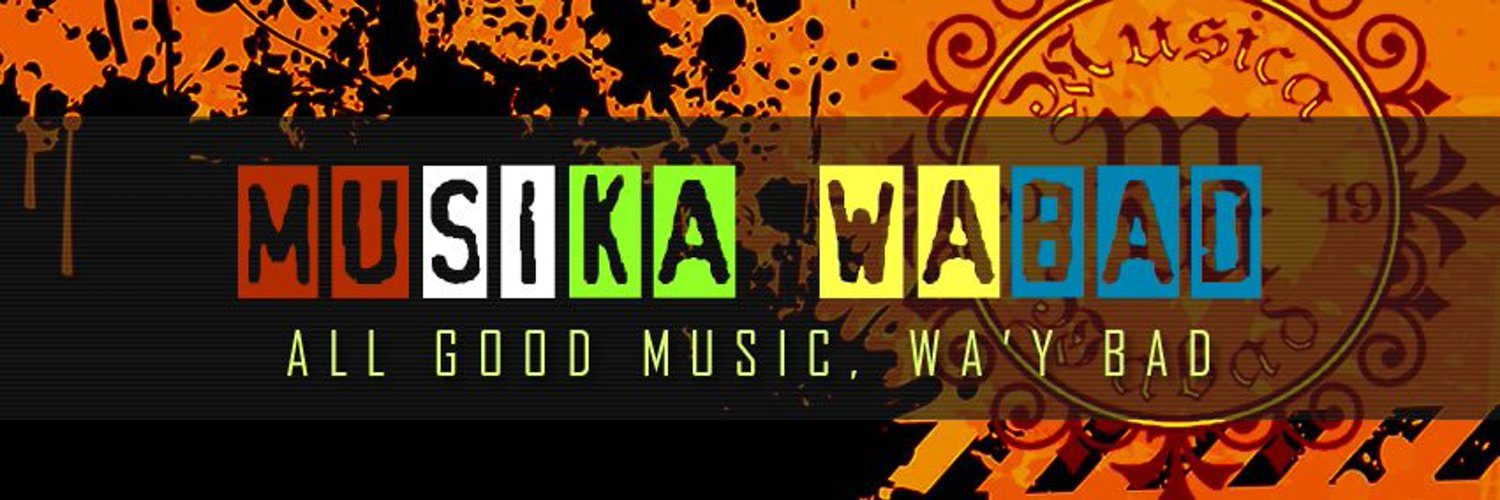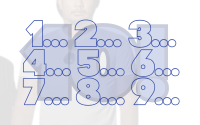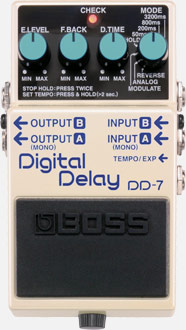How to Arrange Your Guitar Pedals on Your Pedalboard
As an Amazon Associate, I earn from qualifying purchases. That means I earn commissions from my sponsored links or I make money when readers (you) purchase items through my links. Your purchase allows me to continue working as a stay-at-home dad who moonlights as a farmer and a musician. Needless to say, this post contains affiliate links.
A year ago, I wrote about how to arrange your guitar pedals on your pedalboard in order from the source (guitar) to the output (amplifier).
I think it’s time to revisit it and see if my idea has changed in the course of 12 months.
Disclaimer: I no longer use pedals and prefer using a Zoom G5n simply because it’s more convenient and in a way, cheaper. But hey… there’s nothing that compares to the sound of a bunch of good guitar pedals coupled with a good guitar and amp.
Everyone’s Pedalboard is Unique
Ask 10 guitarists what their pedalboard setup is like and you’ll get 10 very different answers.
And that’s the beauty of pedalboards.
There’s no two alike.
There’s always going to be a slight difference from the guitar pedals used to the cables to the placement or order its in.
Having used pedalboards in the past, I’ve probably experimented a lot and had a lot of hits and misses over the years.
I also consider myself kind of restrained these days when it comes to pedal placement and choice.
And here’s how I string it which is good if you’re just starting out with your guitar pedal collection.
What Guitar Pedals Should You Get First?
Ok. This is highly debatable and I have had multiple discussions with more experienced guitarists when it comes to pedal choice and how to configure your pedalboard.
What’s thr first guitar pedal you chould get?
In my opinion, get a decent dirt pedal.
Next, a compressor.
Then some modulation like a phaser.
And once you’re good enough, an expression pedal.
Notice I didn’t include time based pedals like delays and reverb or a tuner. The reason why I didn’t is because I’m thinking you’re just starting out and maybe you have a limited budget. You can get a decent clip on tuner instead of a tuner pedal.
And for reverb, your amp should amp should be able to provide that as a basic feature.
Which brings us to the two most important things you need as a guitarist: a good guitar and a good amp.
To be honest, everything in between, like your pedalboard, is a luxury.
I come from the school of thinking that a good guitar and amp is enough like what Eddie Van Halen said (although he didn’t mention he had lots of rack mounts in the back). But he did say that a good guitar and amp is all you need. Everything else is a luxury.
I believe that because one, he’s a guitar god and two, that’s very good for economical reasons.
The Very Basics, a Good Guitar and Amp
Let’s discuss this briefly so that you’ll understand why some of the pedals in a pedalboard aren’t really that necessary.
Let’s start with a good guitar.
A good guitar, with a good set of pickups and a nice body construction can be everything you need to bring out sustain (if that’s something you like) or have a full sound (thereby negating the need for a chorus or reverb pedal).

And they’re out there in very different price ranges. You just have to put the time and effort to really inspect each guitar that you want to buy to find out how it sounds by the way it vibrates.
This isn’t a price specific feature because I’ve had great sounding guitars that only cost me around PHP 2,500. Although it’s something that you’re really going to see as a normal feature in higher priced guitars. Usually those that are priced PHP 30,000 or more.
I don’t really know any more, I haven’t bought a new guitar in a long time.
Take your time when you’re choosing a new guitar and really feel how it vibrates.
Next, the amp.
A good amp shapes your sound or makes you a better player.
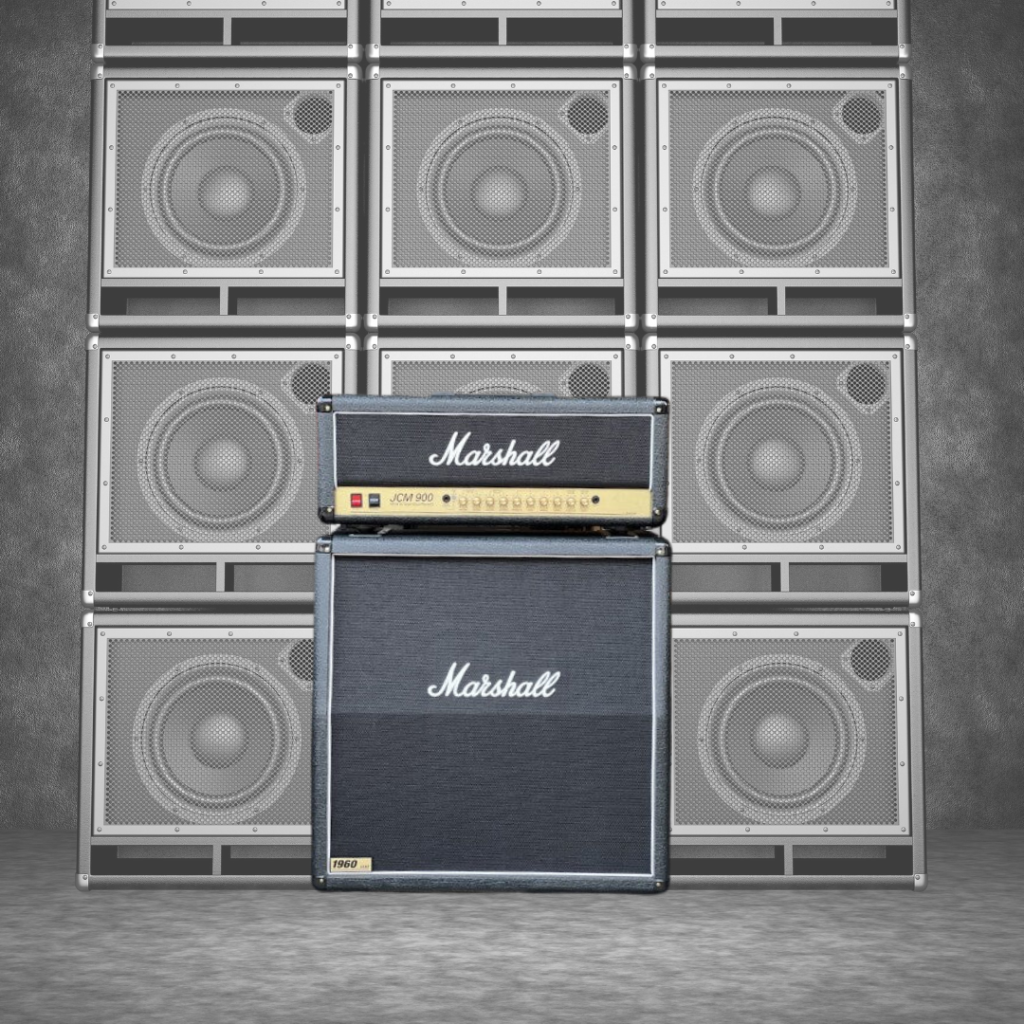
I’ll try to come up with a separate article for this in the future because there’s a lot to talk about when it comes to amplifiers.
But at the very least, it should give you a lot of headroom and have the basic A/B channel that allows you to switch from clean to dirty and also have treble, mid, and bass.
It should have a respectable amount of gain for dialing in that nasty sound to make you rock your audience’s socks off and also have a master volume that blows eardrums away, yours included, if needed.
Your First Guitar Pedals
In this section, I’ll try to help you build your guitar pedal collection in a logical manner by starting with what pedals you should get first and what pedals to get last.
Now understand that this is based on my opinion. And afterwards we’ll build your pedalboard based on the pedals you’ve bought.
Let’s Start with the Basics
(Although this is designed primarily for guitarists, it can be applied to a certain degree to other instruments)
To get the best signal path between your guitar to your amp, just get a good guitar and a good amp.
A good guitar doesn’t necessarily have to be the most expensive. It just has to have good pickups and a respectable body construction. You also need to know how to make it sound good.
I’ve had the privilege to play a Php 2,000 strat copy that sounded good enough onstage as a Php 50,000 Fender Strat.
A good amp is the same.
With just those two, you can already start performing and sound good onstage.
A pedalboard or multi-FX stompbox just gives you more control of your sound in a convenient way. The most convenient would be to have a “roadie” doing the switching for you while you just concentrate on playing your instrument.
So, at the very least, after getting a good guitar and good amp, you’ll need a dirt pedal. I’ll explain further after this chapter.
Next, would be a modulation pedal like a phaser or flanger.
If you have enough left over, an expression pedal like a wah pedal.
And finally, a chorus or delay pedal.
So, in essence, you only really need 4 pedals. A distortion pedal, a phaser, a chorus pedal, and a wah pedal.
Really?
Yeah well Zakk Wylde, one of the most successful guitarists the world knows about uses just these 4. (The rest of his gear situated in the back doesn’t count)

I’ve tried this setup in the past and I was able to survive a lot of gigs. The total cost for this type of pedal setup is only around PHP 20,000.
Even less if you decide to buy cheaper pedals.
Let’s Start with a Dirt Pedal
I always advise new guitarists who want to know which pedals to buy first to get a dirt pedal. Now a dirt pedal can be an overdrive, a distortion, or a fuzz pedal.
Of the three, I would most probably advice you to get an overdrive.
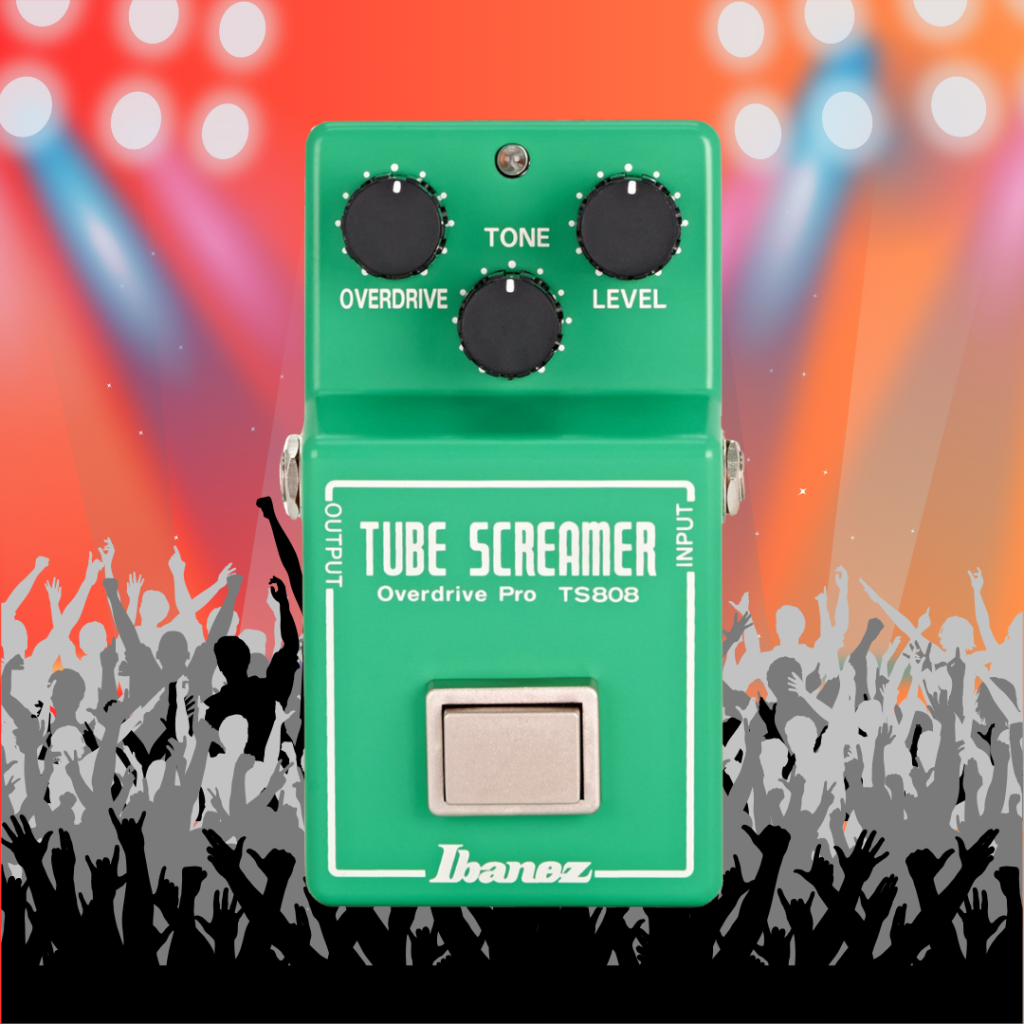
It’s what I was exposed to first and to me that’s the perfect sound. To be specific, the overdrive I would most probably advice you to get is a Boss OD-2 which is what Jean Paul, my former bandmate used and I was always amazed at how many sounds he could get out of it.
An overdrive simulates a tube amp pushed to its limit. It sounds natural.and it doesn’t really change your original guitar sound. It can be used for anything from blues to full-on metal.
And the clean sound that you hear on most of the songs you like, they have a touch of overdrive in it.
Now, let’s say you come to me and you look like someone who prefers metal. I would point you in the direction of a distortion pedal. One of my first pedals was a Denio Heavy Metal. It was black and aggressive looking and gave me a very heavy, saturated, aggressive sound that lead me down the path of heavy metal in my first few years as a guitarist.

It was heavy enough to land me a spot as a guitarist in a death metal band so it should be a good enough pedal for you if you’re into that kind of thing.
Of the three dirt pedals, my least favorite would be a fuzz pedal. But a lot of guitarists like it. But then again, pedals are a matter of personal preference. Maybe it’s because I just don’t know how to control the wildness of a fuzz pedal.
But if you’re into grunge, a fuzz pedal is good.
To summarize, dirt pedals, dirty up your sound. It’s up to you how dirty you want your sound to be.
Also, if you have a good amp, and it has a crunch or dirt channel, it should be enough to save you money or redirect your finances towards other pedals. Better if you have a footswitch capable amp that allows switching between dirt and clean channels.
There was a time I loved just having a footswitch and a 2 channel amp. And no other pedals in between my guitar and the amp.
Moving on, after your dirt pedal, get a compressor.
From a Single Bass Comp to Multitudes of Guitar Pedals Over the Years
I started out as a bassist and only started playing guitar seriously when I turned 20. So, when I started, all I really needed was a bass guitar and an Ibanez Soundtank bass compressor.
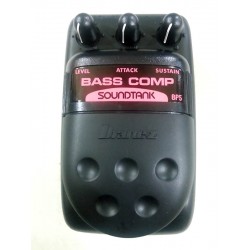
And the only reason why I bought that bass comp was because I thought I needed a gadget to go with my bass just like my guitarist friends.
Also… the bass comp was the only one on display that had anything to do with the bass.
Good thing though… it really made my bass sound better through the amp which covered up most o my lack of skill when I was starting out.
My move to guitars was because my best friend and co-founder of fiIipinowriters.com, Domz, decided he wanted to focus on bass and that I should stick to singing.
I relented but only on the condition that I’d be allowed to play guitar despite my lack of knowledge and skill on the sintrument.
My first electric guitar was a grey acoustic guitar that my dad bought for me. It was cool with lightning motif and shaped like an Octave guitar. I’d turn it into an “electric guitar” by slapping on a pickup system.
My first official electric guitar was a blue Squier strat that I traded in quickly for a Les Paul copy that I bought in Sta. Mesa from Lumanog.
And because I couldn’t afford any guitar pedals then, I would just plug straight into the amp and get my overdrive sound from there.
I eventually sold everything and bought an Ibanez GAX and a Boss DS-1 which led me down a path of acquiring lots of guitar pedals as they years went by.
But I’ve always had a compressor.
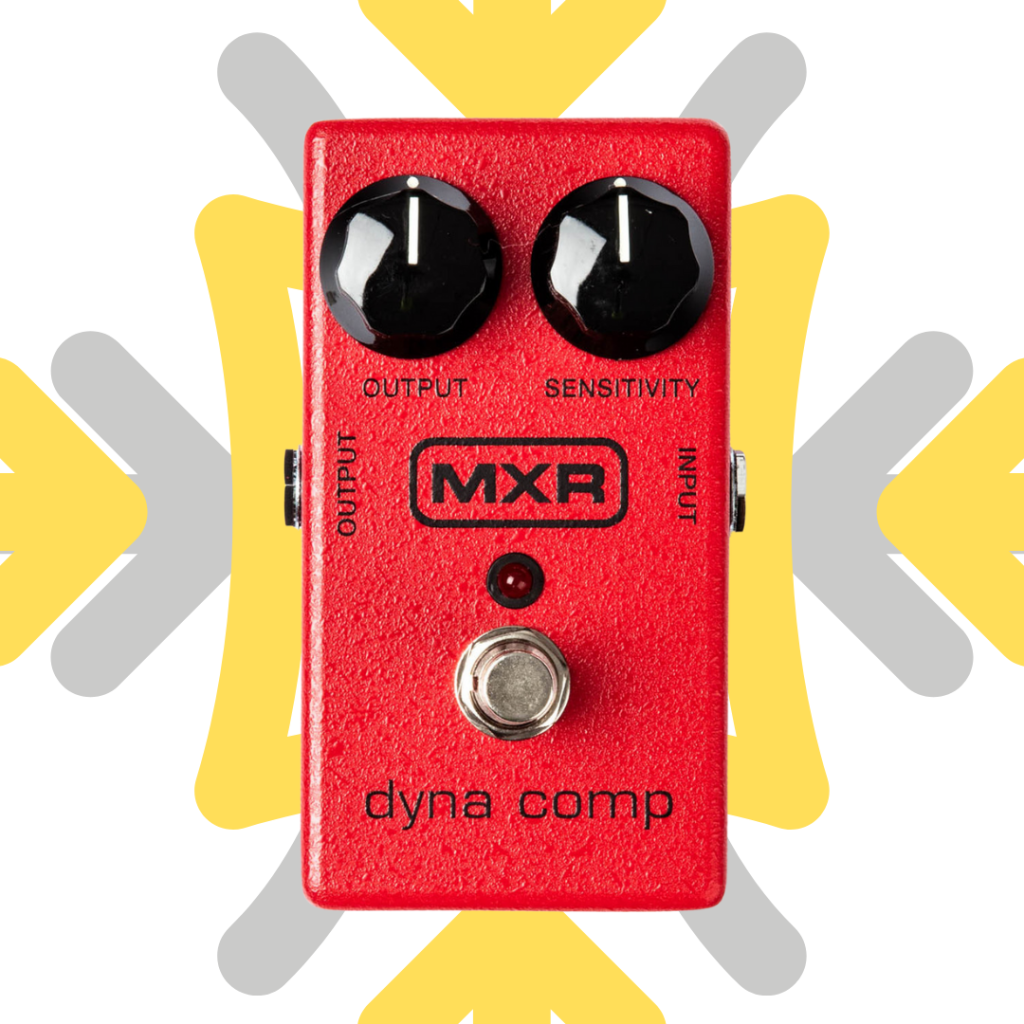
Compressors just seem to make everything sound good. Compressors control the wildness of your guitar sound. They make quiet parts louder and loud parts quieter, evening out your sound.
But that’s the obvious effect that a compressor brings to the table.
Other things it can do for you is act like a noise gate to some level. Remember, it can make loud parts quieter, so I’ve treated it like that in a way. And somethow, it seems to make the guitar sustain a little bit longer.
I don’t know. That’s just me.
And those are the first guitar pedals I owned. An Ibanez Soundtank Bass compressor and a Denio Heavy Metal.
Moving on… a modulation pedal.
Modulation Pedals… the Fun Pedals
Say what you want about modulation pedals but for me, they’re the fun ones.
I love modulation edpals. And of the modulation pedals, I love phaseers the most!
Why phasers? I’m an oversized kid who likes laser sounds.
Phasers create swooshing and swirling sounds that to me sounds like the cross between a wah pedal and a laser gun. I love creating solos using phasers simply because it makes those sounds.
If you’re getting a modulation pedal, get a phaser. It’s fun!
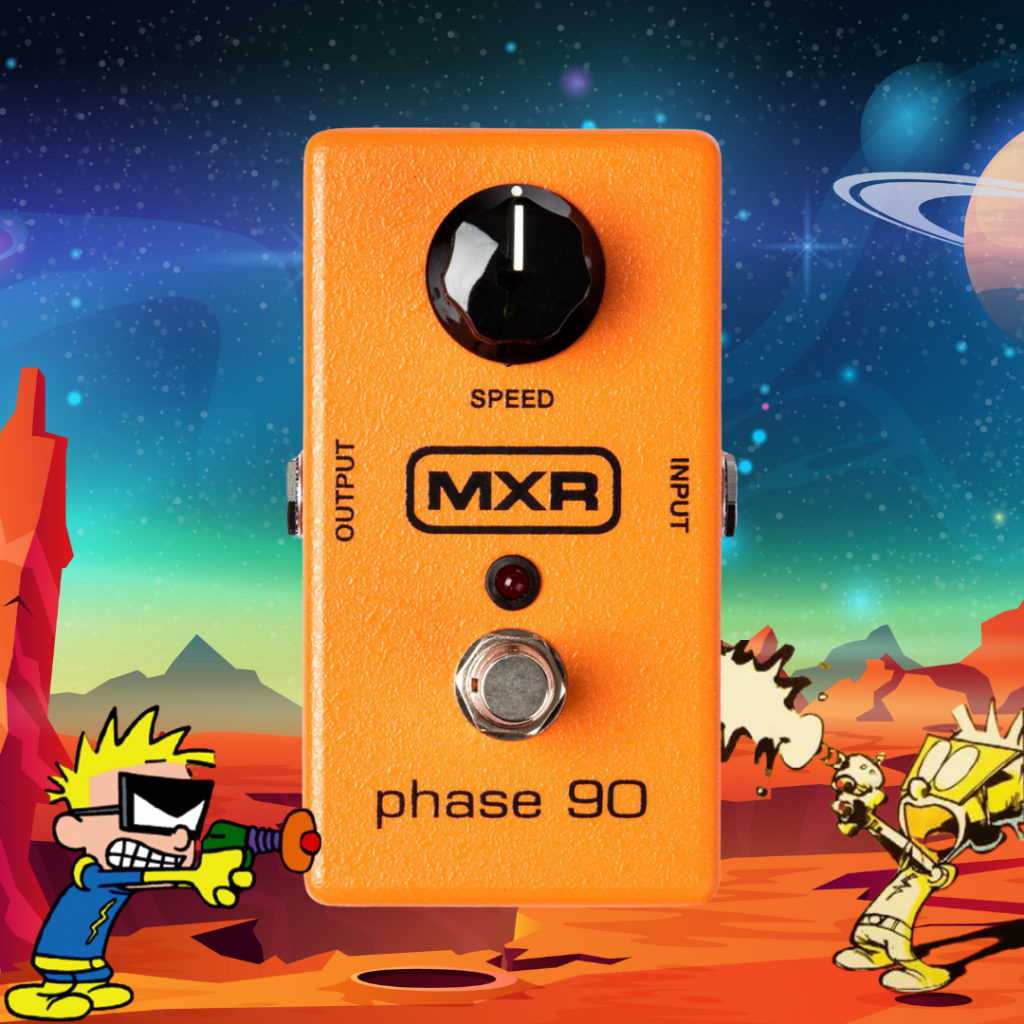
But my first modulation pedal was a chorus. And the reason why I bought it was because the person selling it to me was selling it for a very low price. Criminally low to be exact.
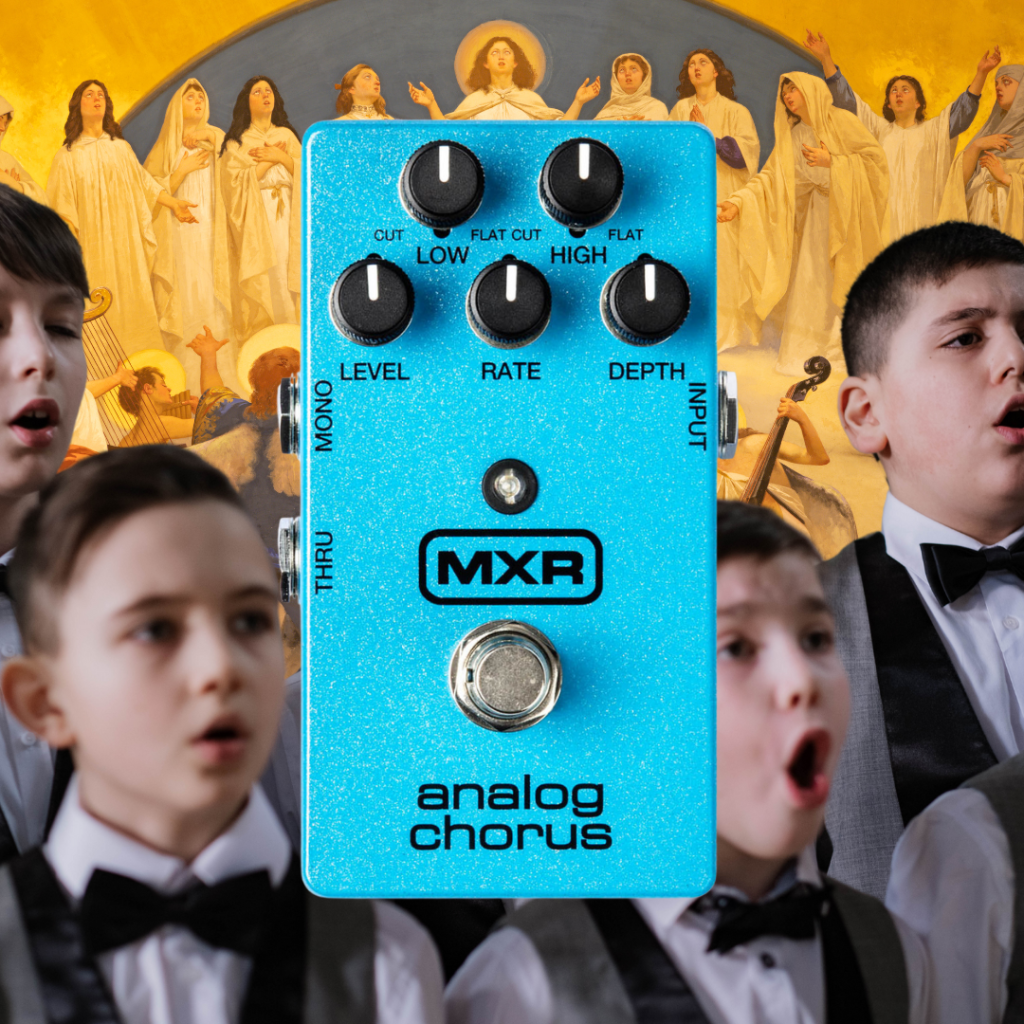
And because of that, I didn’t really appreciate it as much as I did when I got a proper Boss Chorus later on.
A chorus pedal basically thickens your sound. So, this is good if you’re the only guitarist in your band.
But those two weren’t the first modulation pedals I was exposed to. The first modulation pedal that I ever used was a flanger. To be honest, I wasn’t really that interested in getting a flanger as a separate pedal even though I had the money to buy one because I thought it was very limited to producing sounds like a jet taking off.
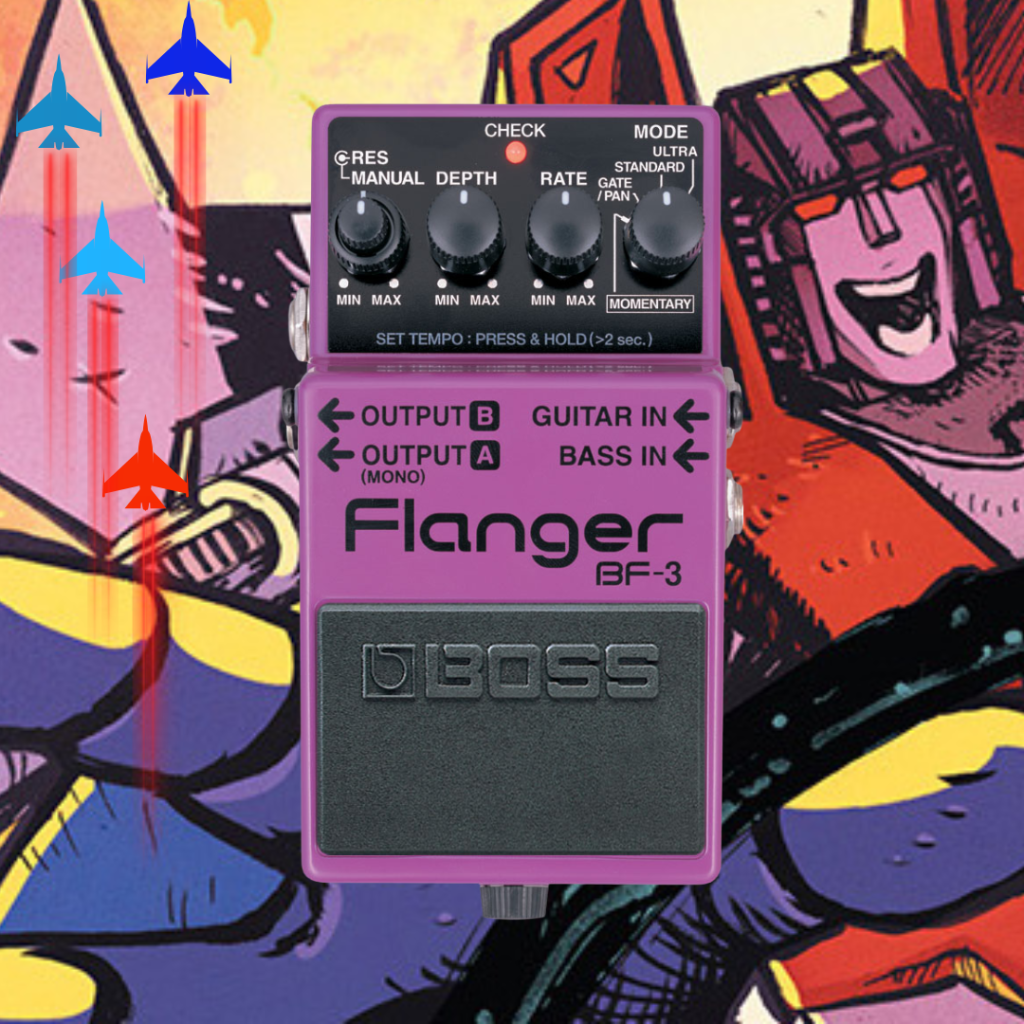
In fact if I used a flanger in any of the songs I made, it was just to add a sort of interesting guitar point. A statement but not the entire narrative. So I wouldn’t really get one unless you’re into that type of thing. Same with a vibrato or tremolo pedal.
Now that’s not to say I didn’t have fun with those two epdals.
For the vibrato, I use it with a very low rate so there’s a very subtle oscillation. And I don’t use it for a lot of songs. Just a few and just to flavor the sound a bit.
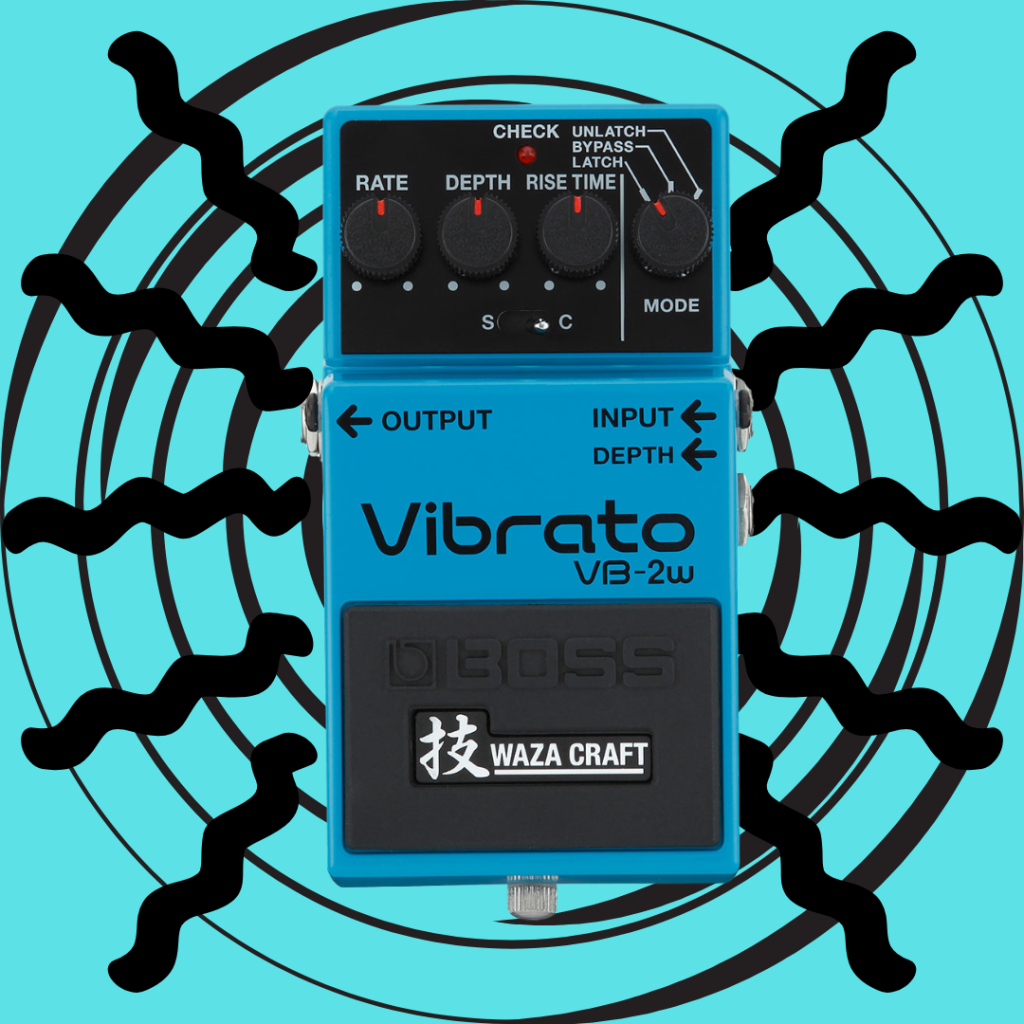
But the tremolo… oh man… I love the tremolo pedal but not enough to buy another one. I got a tremolo pedal from Jean Paul as a gift and I loved it so much because I could stomp on it and produce a furious tremolo sound to punctuate a solo.
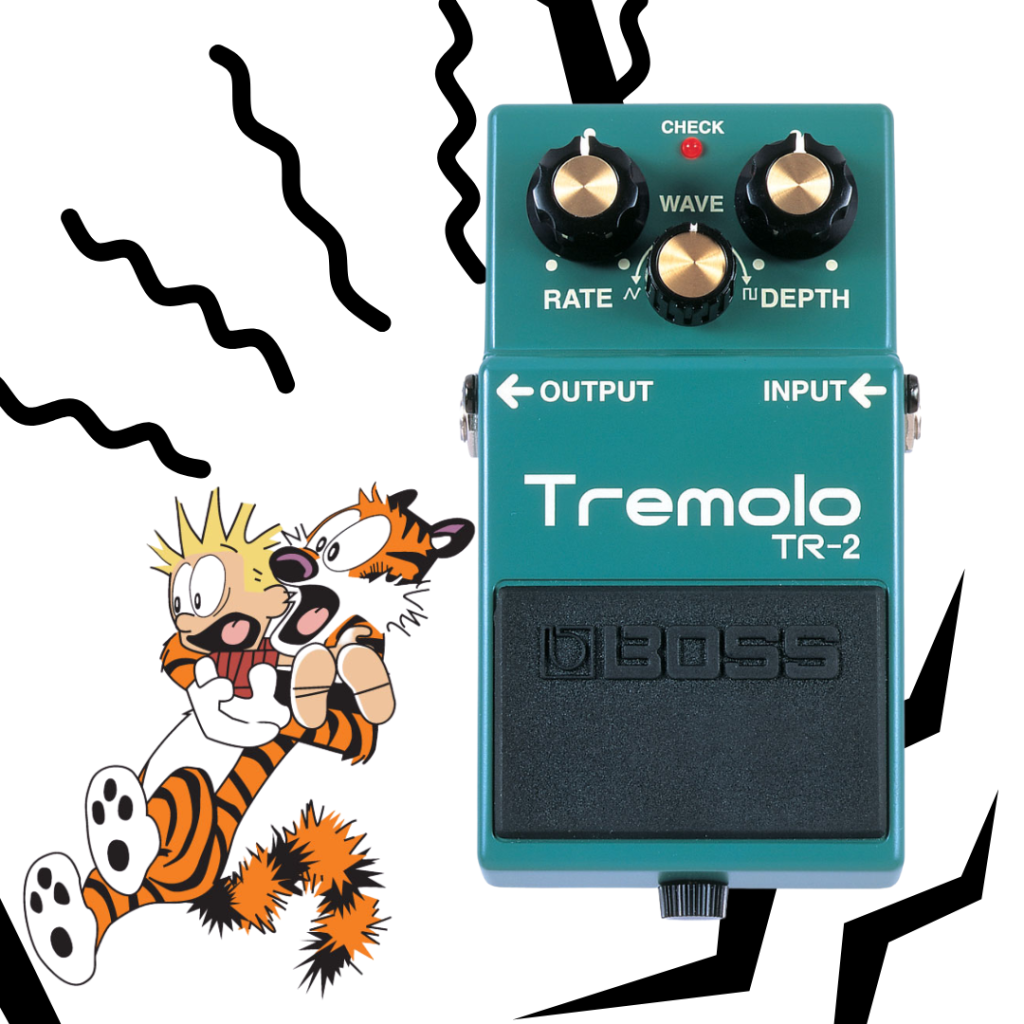
So yeah I use it for fun and only for a very few solos but for what it’s supposed to do, a tremolo pedal us very effective.
So out of the five: phaser, chorus, flanger, vibrato, and tremolo, I would suggest getting the chorus first and then the phaser and if you have money left over get the remaining three. Just remember that you’re probably not gonna use them that much save for the phaser and chorus.
But then again, that’s a personal preference.
Express Yourself with an Expression Pedal
One of the things my first bandmates and I celebrated was when one of us finally got a wah pedal.
Oh it was a glorious day indeed when Leander brought one to the practice space.
Everyone had a go at stepping on it and making it wah like crazy.
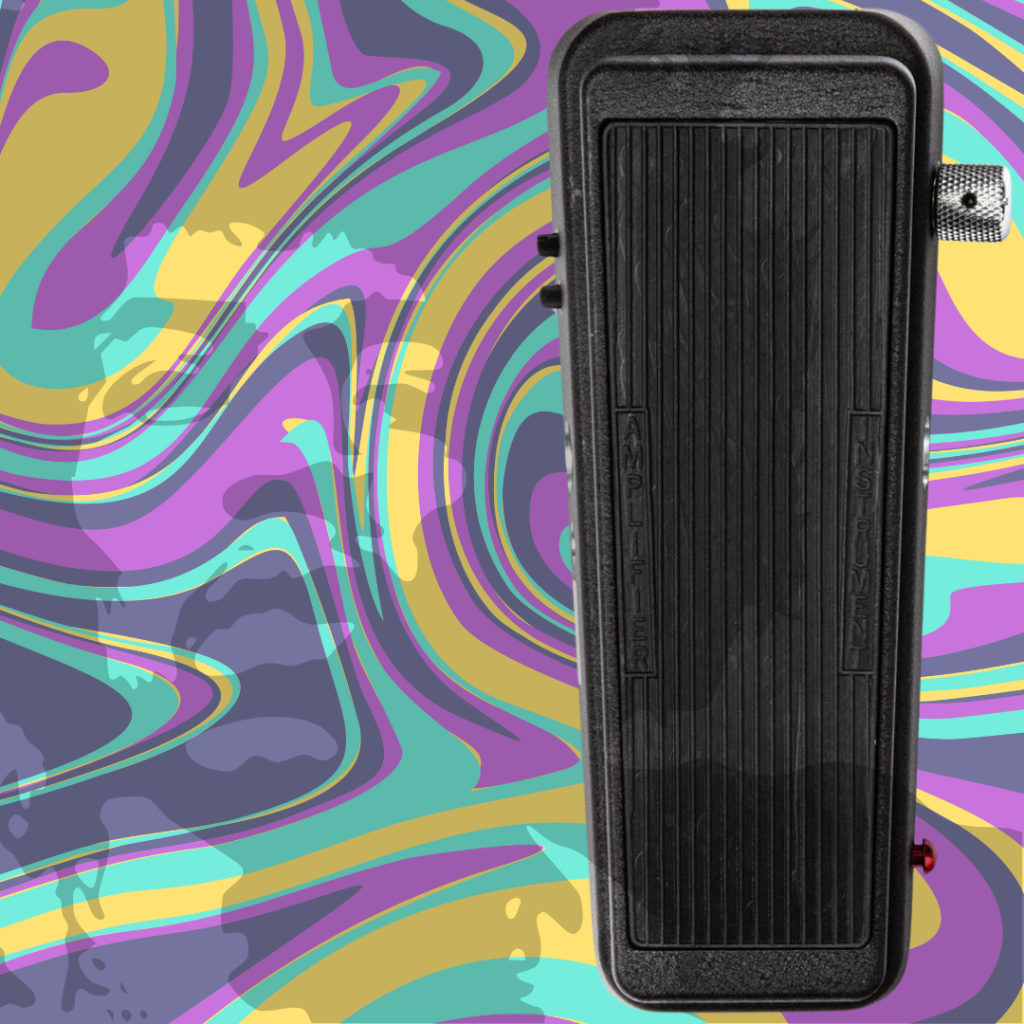
Years later, we all learned how to use a wah pedal properly.
As a flavoring tool and not as something to play the entire song with.
The first time we were able to encounter a wah pedal was actually a Boss Auto Wah. And we’d leave it on for the entire song which made it sound like a 70s movie for adults.
Because of that Auto Wah, we wanted to get the real thing. Plus, Slash made stepping on the wah pedal so cool. Him and Kirk Hammett.
So yeah, get a wah pedal if you have the extra funds. You don’t really need it but you’ll have a lot of fun with it.
And that’s really it. With a dirt pedal, a compressor, a modulation pedal, and an expression pedal, you’re gonna be set for the stage.
Well…. Somewhat set for the stage.
There are still other pedals we haven’t covered.
But before we get to that, let me warn you about GAS or Gear Acquisition Syndrome and how disastrous it cn be to your finances and to your development as a guitarist.
Acquiring Stompboxes and Suffering from Pedal Confusion as a Result of Getting Addicted to Guitar Gear
GAS can have a serious impact on your life as a musician. And it doesn’t just affect guitarists, it affects drummers, bassists, keyboardists, etcetera. The only one it probably doesn’t have any effect on are singers.
Oh wait… maybe not.
There was also a time that I was addicted to just buying microphones and microphone headsets.
So yeah… it affects everyone.
And you don’t notice it until it’s too late.
You might even end up resorting to getting a job just to afford the things you’re obsessing over. I know I did that multiple times at the cost of not being able to gig or have enough time to practice.
When you’re younger it’s easier to fall into that trap especially if you have access to money or free gear.
But then, as the number of gear you have increases, it is also easier to get confused as to where to put it in the pedal chain or even to include it or just keep it on the shelf or sell it.
This article will help clear that up by helping you determine what are the most absolute necessary pedals you need to have and how to chain your signal.
GAS can seriously derail your development as a guitarist especially if you are lead to believe that you need more gear to sound better or to even be able to play at all.
Once again, all you really need to be good is a good guitar and a good amp. Everything else is flavoring on top.
GAS can be an excuse not to play or practice or even gig.
And it shouldn’t be that.
There shouldn’t be any excuse to become a better musician.
A good example is Django Reinhardt.
Or Tony Iommi.
So, moving on, more pedals that you don’t necessarily need but would be good if you have a growing collection of pedals on your pedalboard.
What Every Pedalboard Should Have: a Tuner.
Every musician needs one.
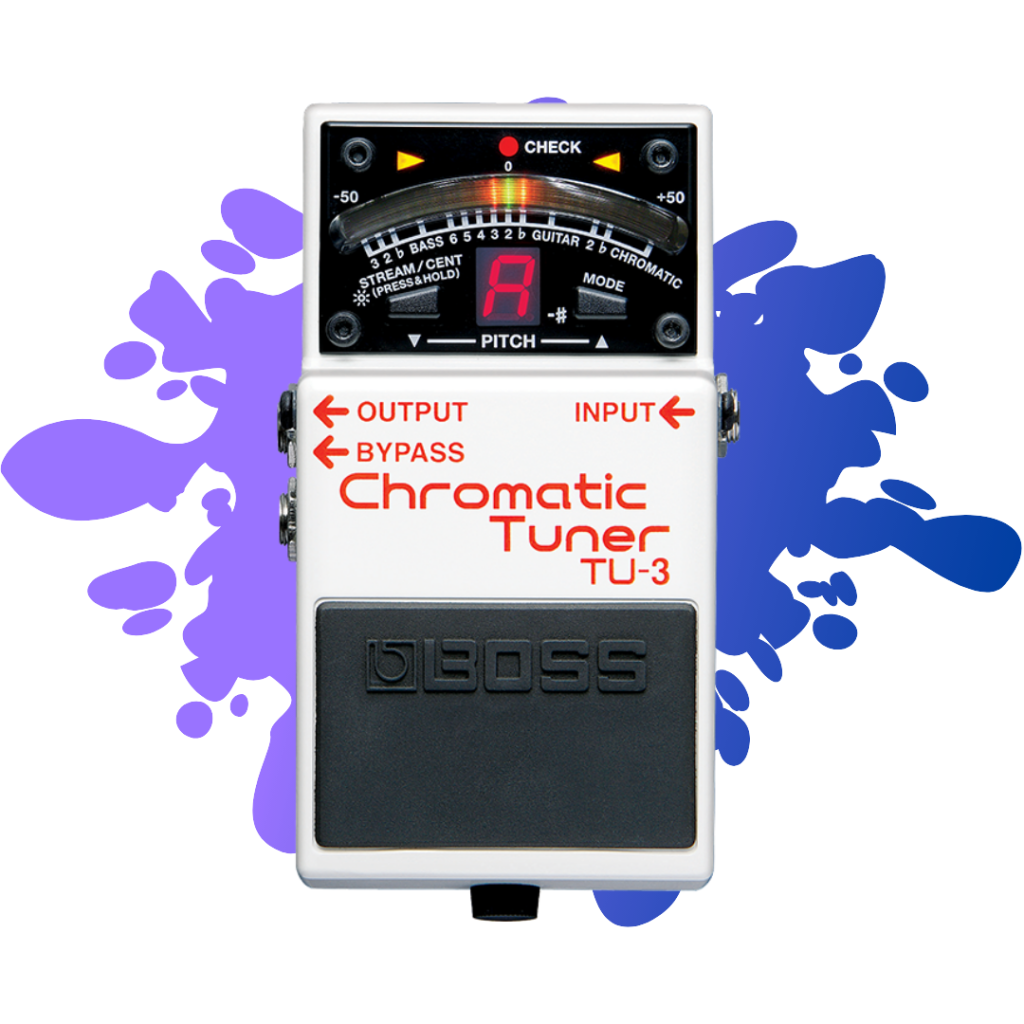
And it doesn’t necsaarily have to be a pedal.
It can be a clip on if that’s all you can afford but if you can, get yourself a Boss Tuner Pedal. There’s just no tuner like it.
I know, this sounds like a Boss ad but after using one, I’ve never really looked back.
A Delay Pedal Because it’s Fun
I’m not really known for being experimental with my use of a delay pedal.
Usually, I just use it to sustain my notes.
But a delay pedal is cool. And it’s fun.
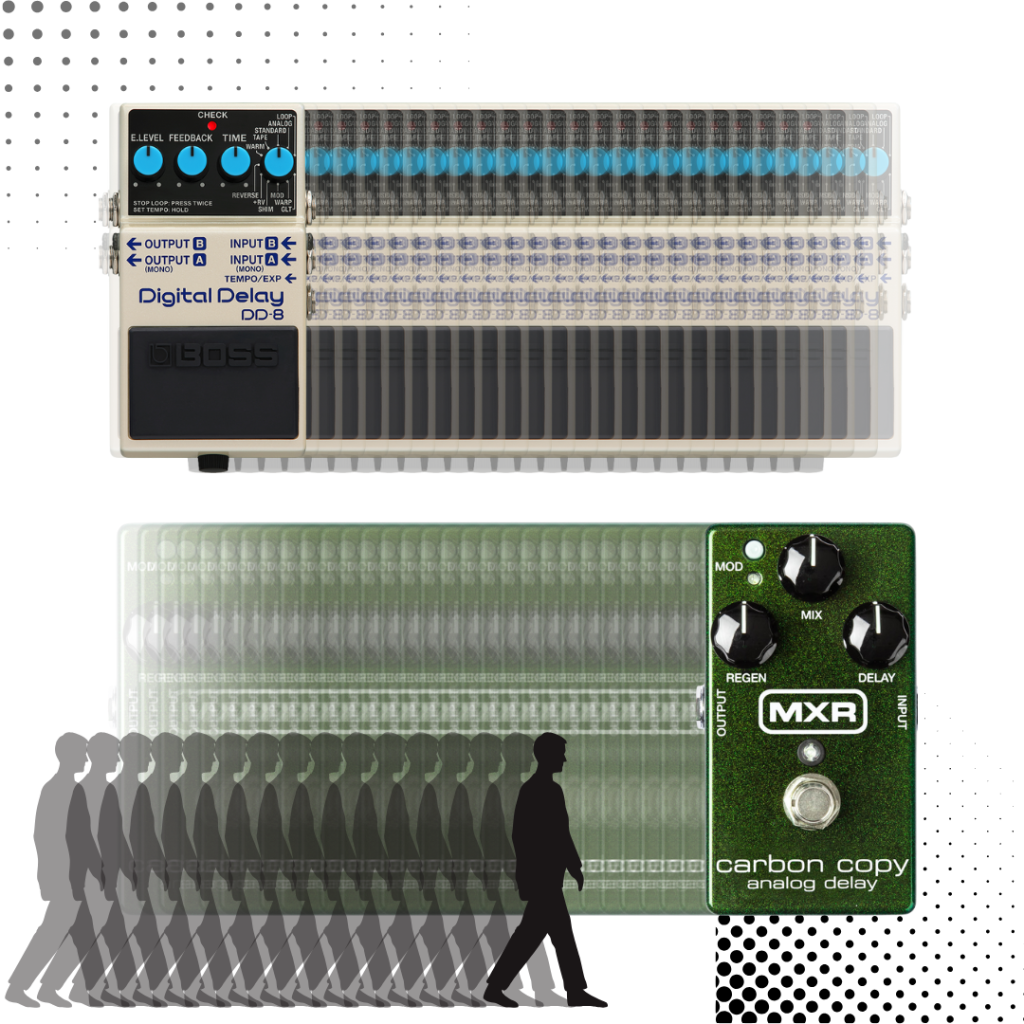
And if you get good at using it can make you sound like a sonic wizard.
I usually place this nearest to the amp right before the reverb and output buffer.
Buffers, at Least Two!
Remember what I said about the purest sound coming from your guitar to your amp? Pedals in between your guitar and your amp tend to weaken that signal.
Without them, you’re bound to end up experiencing “tone suck”.
It’s just the nature of the beast.
For many years, I suffered severe tone suck because I had so many pedals and no buffers. It was only when it was explained to me why it was happening that I decided to invest in buffers.
Buffers act as signal amplifiers that helps maintain the signal strength from your guitar through your pedalboard and onto your amp.
I was told to just get one.
I decided to get more than one.
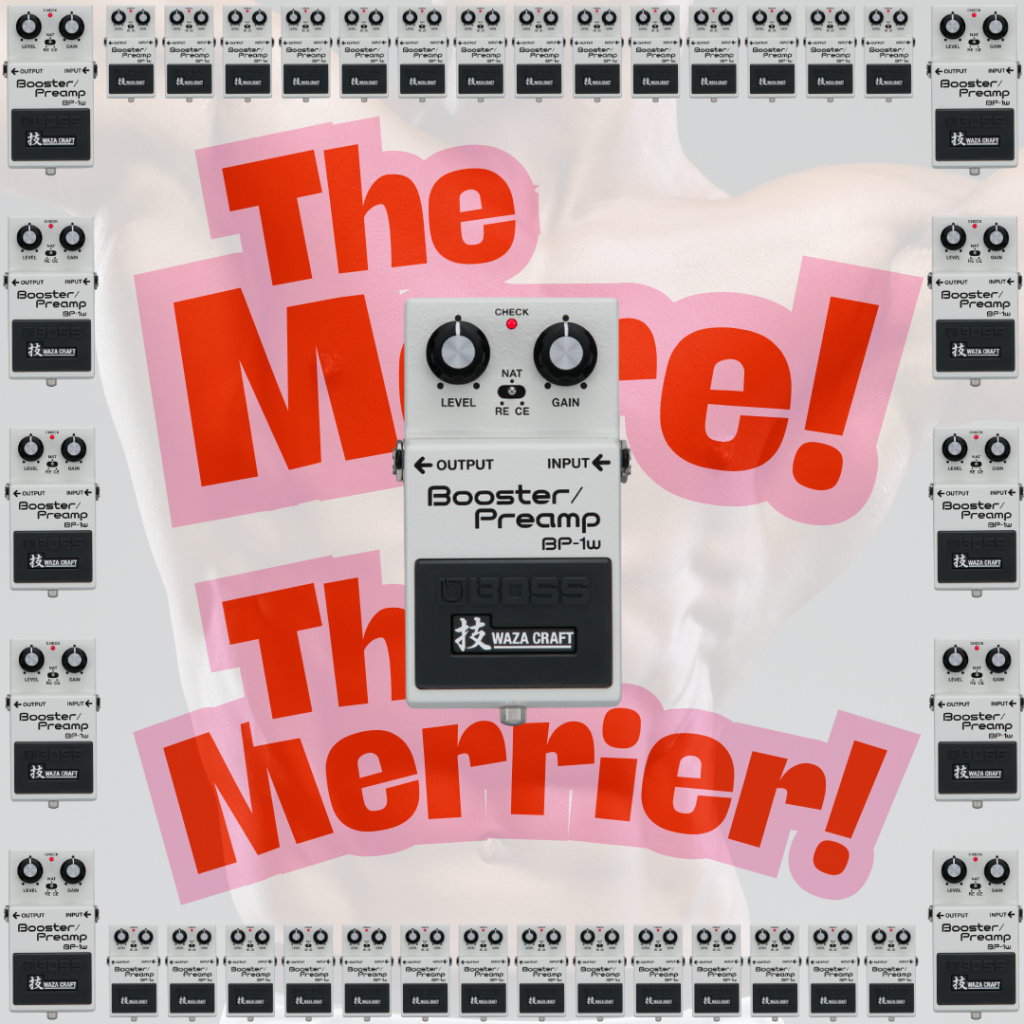
I had the money then and I had that “the more the merrier mentality” back then.
I mean if the problem is not having a buffer in between my guitar to my pedal board and my pedalboard to my amp, why not go for overkill and have buffers in between each pedal, right?
Back then I also didn’t know that some pedals had built in buffers.
So, I spent a lot of money experimenting because I didn’t know any better.
And because I bought the cheapo buffers back then, I ended up not being able to sell those when I realized my mistake. So I burnt a lot of money on a stupid mistake.
Don’t be like me.
Only buy at least 2 buffers. One for your input, and one for your output. You can add a third one or buy pedals with built-in buffers.
Remove Tone Suck Further with a Boost Pedal
A boost pedal helps push your signal strength on through to the next pedal. What it does is raise the output of the preceding pedals and carries it on to the next pedals in the chain.
It’s like a buffer but one that you can turn on and off.
I usually use a boost pedal when I want to raise my signal strength and volume when doing solos.
It makes it more… exciting.
An Equalizer Shapes You
For more tonal control, you can also get an equalizer.
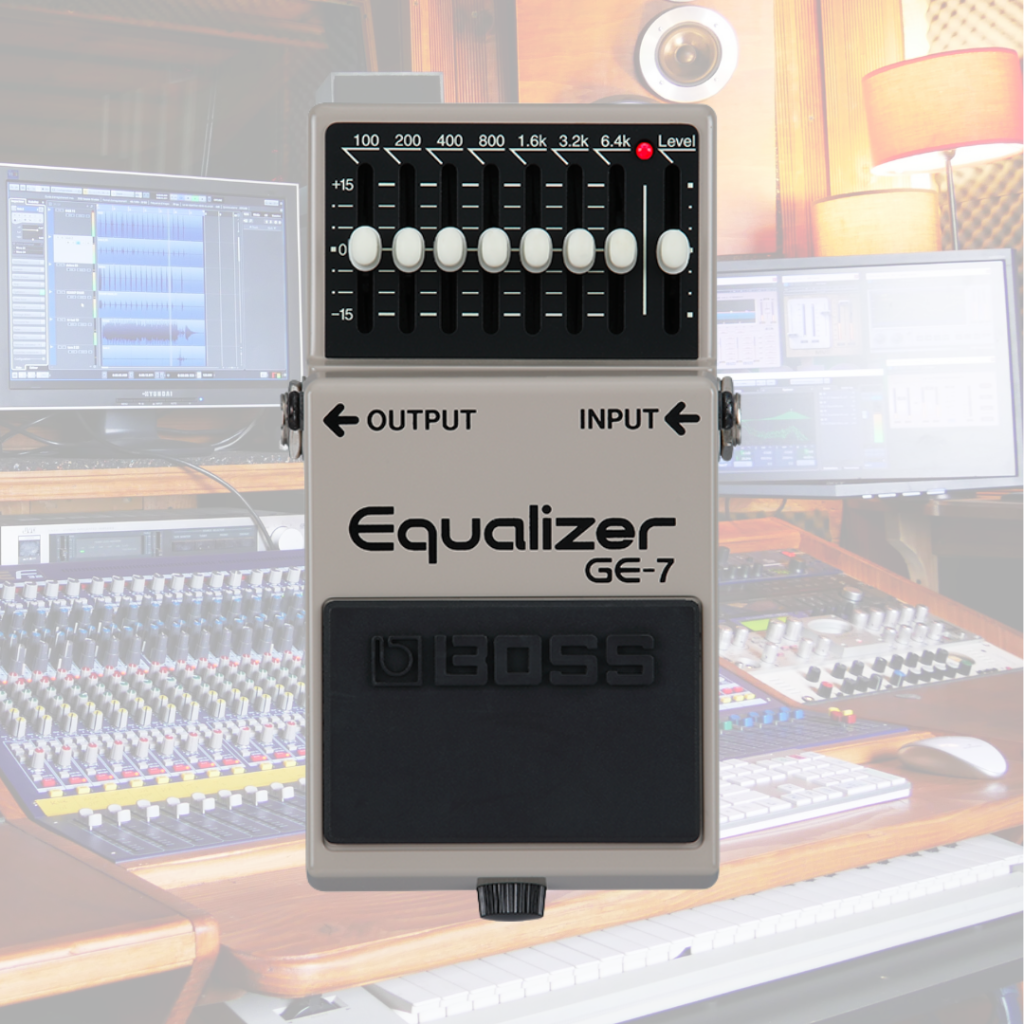
I learned about the importance of an equalizer back when I was playing bass. So I just carried it towards my guitar pedalboard thinking I was the first one to invent it.
It’s not something that I would say is necessary but for the more critical guitarists, it’s an absolute must to have a graphic equalizer in their pedalboard.
And yeah I have one on just because an equalizer is a great way to shape the “you-ness” of your sound.
I usually have it after my distortion and overdrive combo but you can place it wherever you want on your board.
Move More Air and Get a Bigger Sound with a Good Reverb
Rverb is usually built-in with a good amp.
Remember? I said get a good amp.
If you have a good amp, you won’t need to buy a reverb. And that’s easily a PHP 5,000 savings or at $ 100.
A reverb basically gives you a bigger sound.
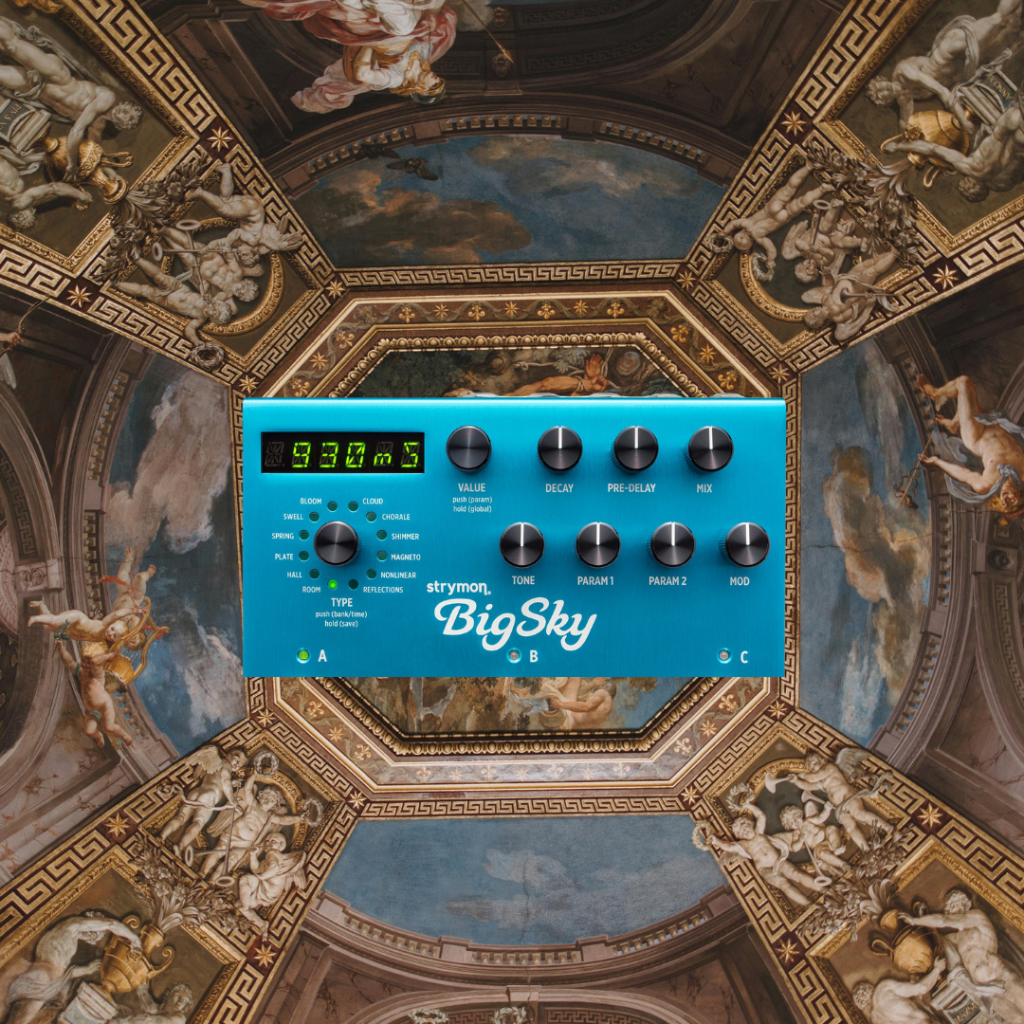
Usually I don’t place this in the pedalboard and opt instead to place it in the FX loop. But that was before when I had a roadie to help me set things up.
These days, I don’t have one.
And I don’t have the time to do the send and return multiple cable setup to do an FX loop. So, I just get a good amp or do without a reverb and rely on the house’s sound.
Shut Things Up with a Volume Pedal
There was a time when I said “why would I get a volume pedal when I already have my volume knob?”
It was only later on that I realized that rolling my guitar’s volume knob back cleaned up my sound before lowering my volume.
With a volume pedal, you get instantaneous results while still maintaining the level of dirt in your sound which makes for more abrupt breakdowns.
Think of it as a master volume that you can control with your feet.

Now it’s not an absolute must to have one in your pedalboard but it’s great to have one.
I can live without it.
Then again, I usually rely on palm muting, and a severe noise gate to shut my guitar up when my band goes into a breakdown.
And make sure you have a secondary, isolated line from your tuner to your volume pedal so you can keep everything quiet and still have the ability to tune your guitar.
That is if you decide to get a volume pedal.
And Now for the Pedalboard Order
Ok, I hope I didn’t forget anything. If I did, I’ll just update this article or create an improved vesion next year.
Maybe then, I’ll have new ideas as to how to sequence these pedals.
Ok so you ready?
Let’s start.
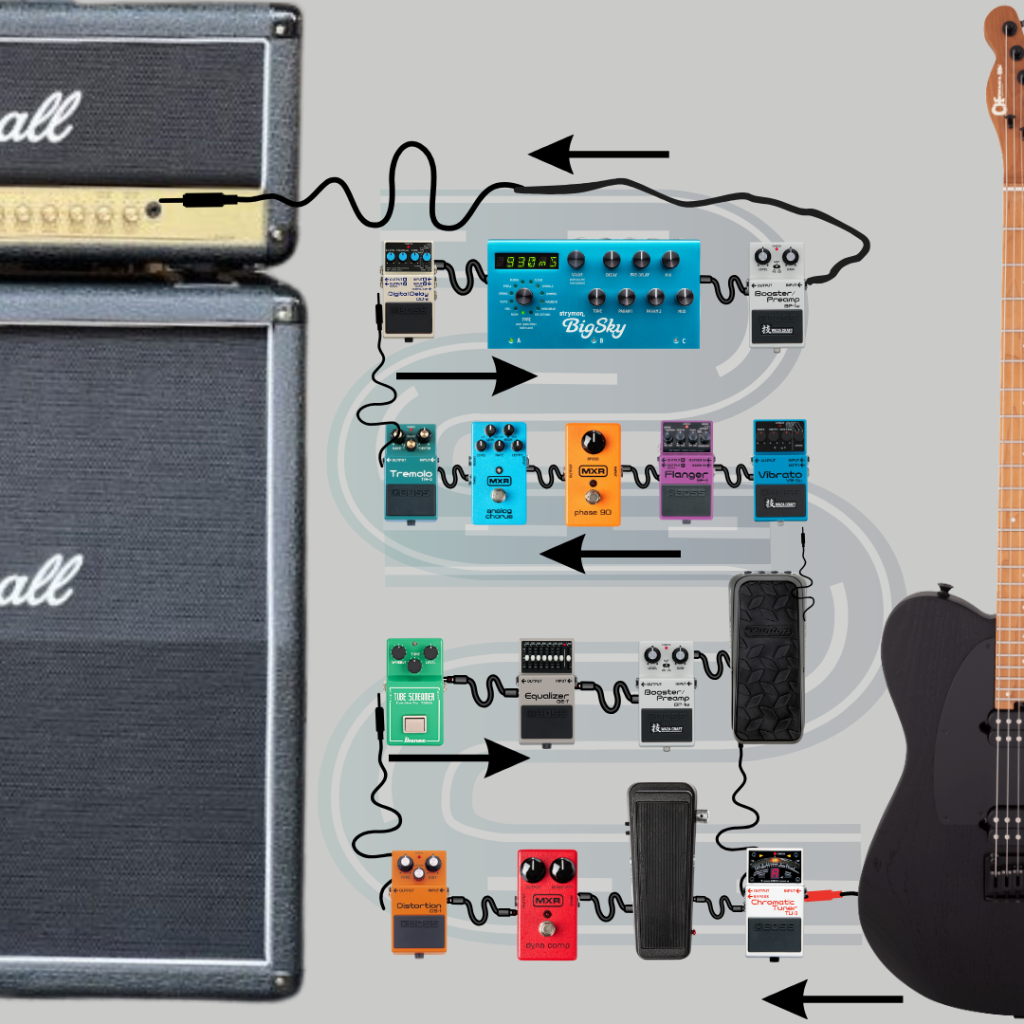
As you can see, I start with a good guitar.
I then run it through a tuner that then leads to a wah and the bypass leads to the volume pedal.
This ensures that the tuner gets the purest sound from your guitar for tuning purposes. The wah’s position allows you to use all the other pedals’ sound that is produced and modulate it when you step on your wah pedal.
Next, I would put the input buffer.
This ensures that the signal strength is even from the guitar through the tuner and the wah before it hits the compressor.
The compressor’s role here in this position is to ensure that everything is even form the loudest of the louds to the quietest of the quiets before it hits your gain or dirt pedals.
Now normally, the way most guitarists gain stage is through the overdrive into the distortion. I realized that I like the distortion into the overdrive setup better.
The distortion has a hard clipping and as it goes through the overdrive, it just sounds more hard rock to me. But then again that’s just me.
I don’t usually use a fuzz pedal but I would place the fuzz after the distortion + overdrive combo. And then the equalizer before a boost pedal.
The equalizer is great for shaping your sound when you play your solos and activating it before you hit your boost gives you that “silky loud sound”.
My third buffer usually goes here but is not always necessary if you have buffered pedals.
This is where the volume pedal goes before it hits the modulation pedals.
Since I love all the modulation pedals for falvoring purposes, I have them stringed up in this manner: vibrato into the flanger into the phaser into the chorus into the tremolo. You might want to add a buffer here if you experience tone suck but the way I strug them up is their importance to my overall sound.
The tremolo is closest because I like how it sounds when I hit it if I have everything else in the modulation section on. The chorus is near the end because I like how it sounds with everything else that precedes it on without the tremolo activated.
Next, the phaser sounds nice even if the flanger and vibrato are on before it.
You get the idea right?
After that we have the time based effects which are the delay pedal and reverb pedal. I have the delay before the reverb because if I had it on backwards it would muddy the sound up.
Last but not least, I have a buffer again.
And last but not least the amp.
Now if any of the effects in the pedalboard are present in the amp, I take those unnecessary pedals off to reduce the chances of tone suck and to make things simpler and not have to tap dance like an idiot especially since I do double duties on the mic and on guitar.
I also have a secondary epdalboard that acts as an FX loop but is only useful if there’s someone there who can man it.
So there.
If you have questions, you can always comment below or send me an email at musikawabad@gmail.com .
Also, remmber tgat this is based on my preference and what you like may entirely be different from mine. And it’s ok.
In the end, what you like is what matters.
Your pedalboard is only limited by your imagination and budget.
…Or You Could Always Choose a Multi-FX pedal
In the end, it’s so easy to fall into the trap that you need pedals just to play. Pedals are there to enhance your sound.
These days, I just run my guitar through a Zoom G5n and it seems to help me survive gigs. And if you check my presets, I barely have anything on it except an overdrive and some delay.
